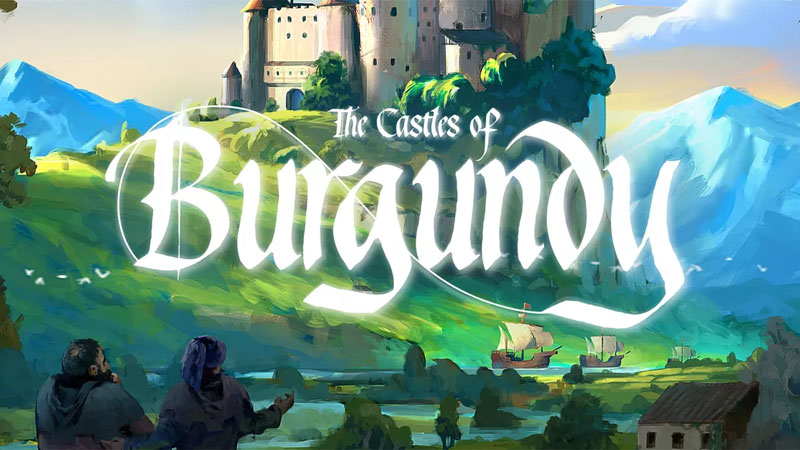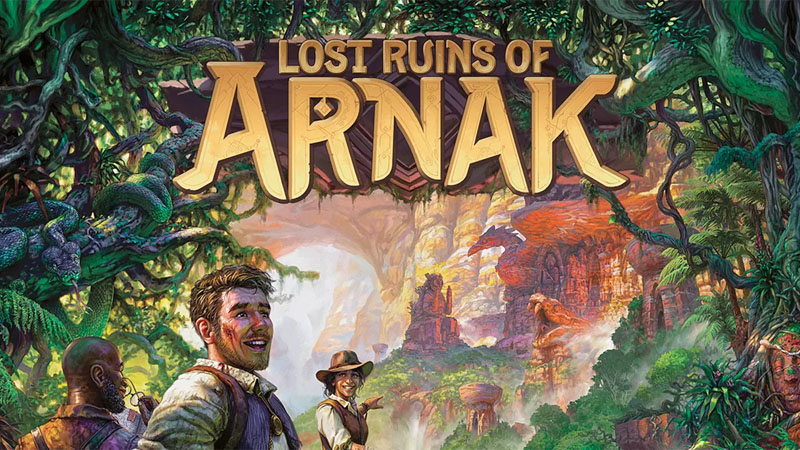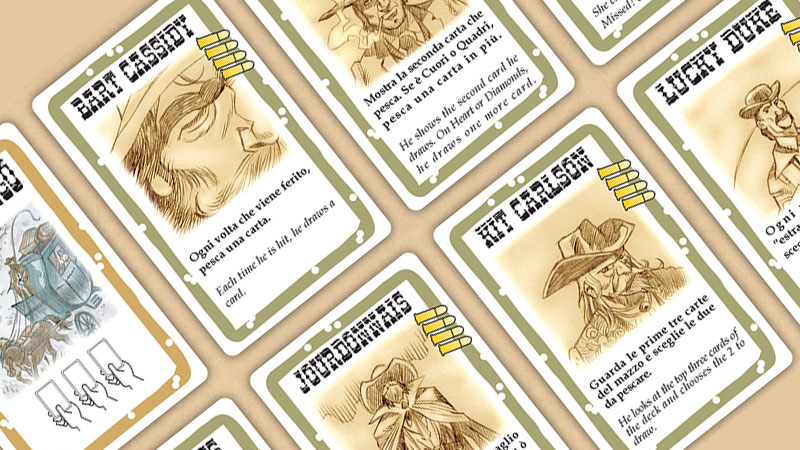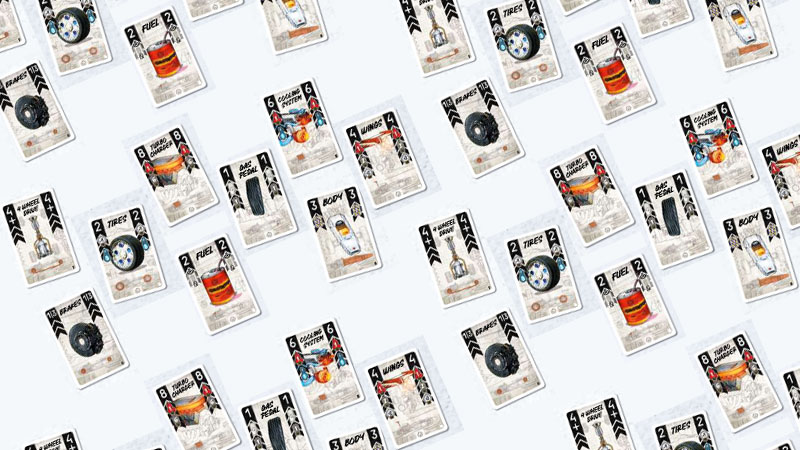| 6/10Complexity | |||||
| Players 2-4 | Duration 30-90mins | Genre Tile Placement |
In The Castles of Burgundy Board Game, players strategically expend dice to acquire and place tiles to compete for the most victory points.
Getting Started
- All players begin with a game board, 2 dice, 1 silverling, 1 castle tile, and 3 random goods tiles.
- Determine the starting player by rolling dice. Players receive worker tiles based on turn order (eg. 2nd player gets 2 worker tiles).
- Players choose a location to place their starting castle tile, with all future tiles required to be adjacent to an existing tile.
- The game consists of 5 phases, each containing 5 rounds.
Step 1: Roll and Spend Dice
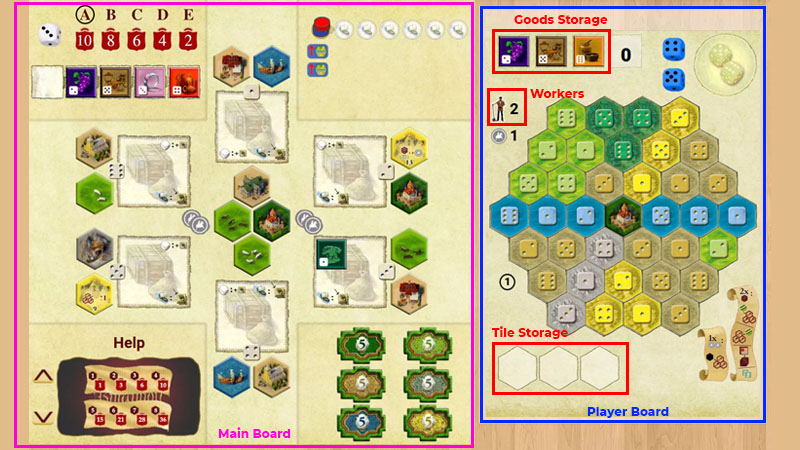
During your turn, roll your 2 dice, then allocate the results as follows:
- Take a tile from the main board, storing it in your tile storage (capacity of 3 tiles).
- Place a tile from your storage onto your player board.
- Sell goods from your storage (able to hold up to 3 different types of goods).
- Take 2 worker tiles.
Tiles on the main board (to be taken), spaces on your board (for you to place tiles) and goods (from your goods storage) all have a corresponding dice value.
Matching dice numbers are required to execute these actions, with each worker capable of modifying your dice by +1/-1 (Note: 6 and 1 are considered adjacent).
Selling goods yields 1 silverling regardless of quantity, plus Victory Points equal to the number of players multiplied by the goods sold.
Step 2: Buying Tiles
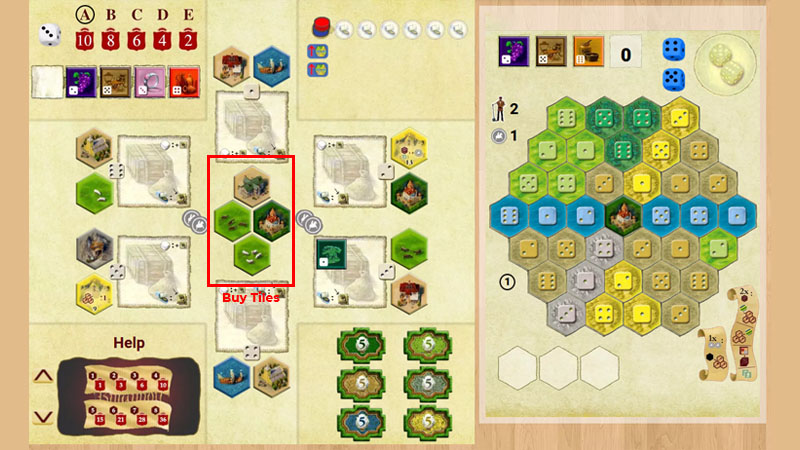
After spending your dice, you have the option to purchase one additional tile from the central depot for 2 silverlings.
Step: 3 End of Game and Scoring
The game concludes after the 5th phase (phases end after 5 rounds). Players earn Victory Points through the following means:
- 1VP per unsold goods tile
- 1VP per Silverling
- 1VP per 2 Worker tiles
- Yellow tile effects
- 4VP per Watchtower tile (brown building tile)
Filling Regions (Bonus VP)
Filling colored regions on your player board with tiles grants additional victory points, with immediate VP bonuses based on the size of the completed region:
- Size 1 = 1VP
- Size 2 = 3VP
- Size 3 = 6VP
- Size 4 = 10VP
- Size 5 = 15VP
- Size 6 = 21VP
- Size 7 = 28VP
- Size 5 = 36VP
Additionally depending on the phase bonus VP is rewarded regardless of region size:
- Phase A = 10VP
- Phase B = 8VP
- Phase C = 6VP
- Phase D = 4VP
- Phase E = 2VP
Finally, the first player to cover all spaces of one color on their entire player board receives the large bonus VP tile (5, 6, 7 VP for 2, 3, 4 players), while the second player earns the small bonus VP tile (2, 3, 4 VP for 2, 3, 4 players).
The Green Animal Tiles
Animal tiles grant VP based on the number of animals present on the tile (eg. 4 cows = 4 VP).
If you already possess animals of the same type in the same region (they don’t have to be connected), you earn points for those animals again.
For example, placing 3 pigs in a region with 2 pigs yields 5 VP, and adding another 4 pigs results in 4 + 3 + 2 = 9 VP.
The Blue Ship Tile
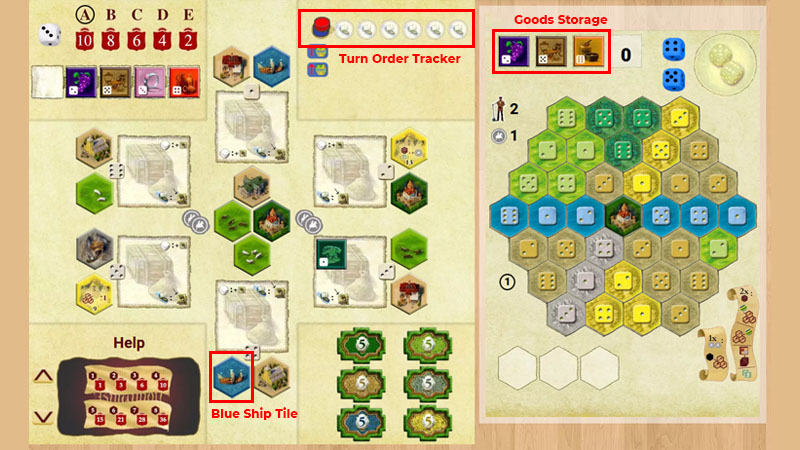
The ship tile plays a crucial role in determining player turn order. Whenever a player adds a ship tile to their board, they advance their turn order counter one space forward.
The player furthest on the turn order track goes first:
- Turn order counters are stacked on top of any existing counter on the track when moving to a new space.
- In cases where multiple counters are stacked, turn order flows from top to bottom of the stack.
Additionally, players may collect all goods from any one goods depot space and transfer them to their goods storage.
Players can store up to 3 different types of goods and must leave behind any excess goods that cannot fit.

